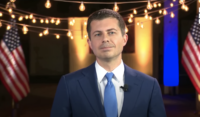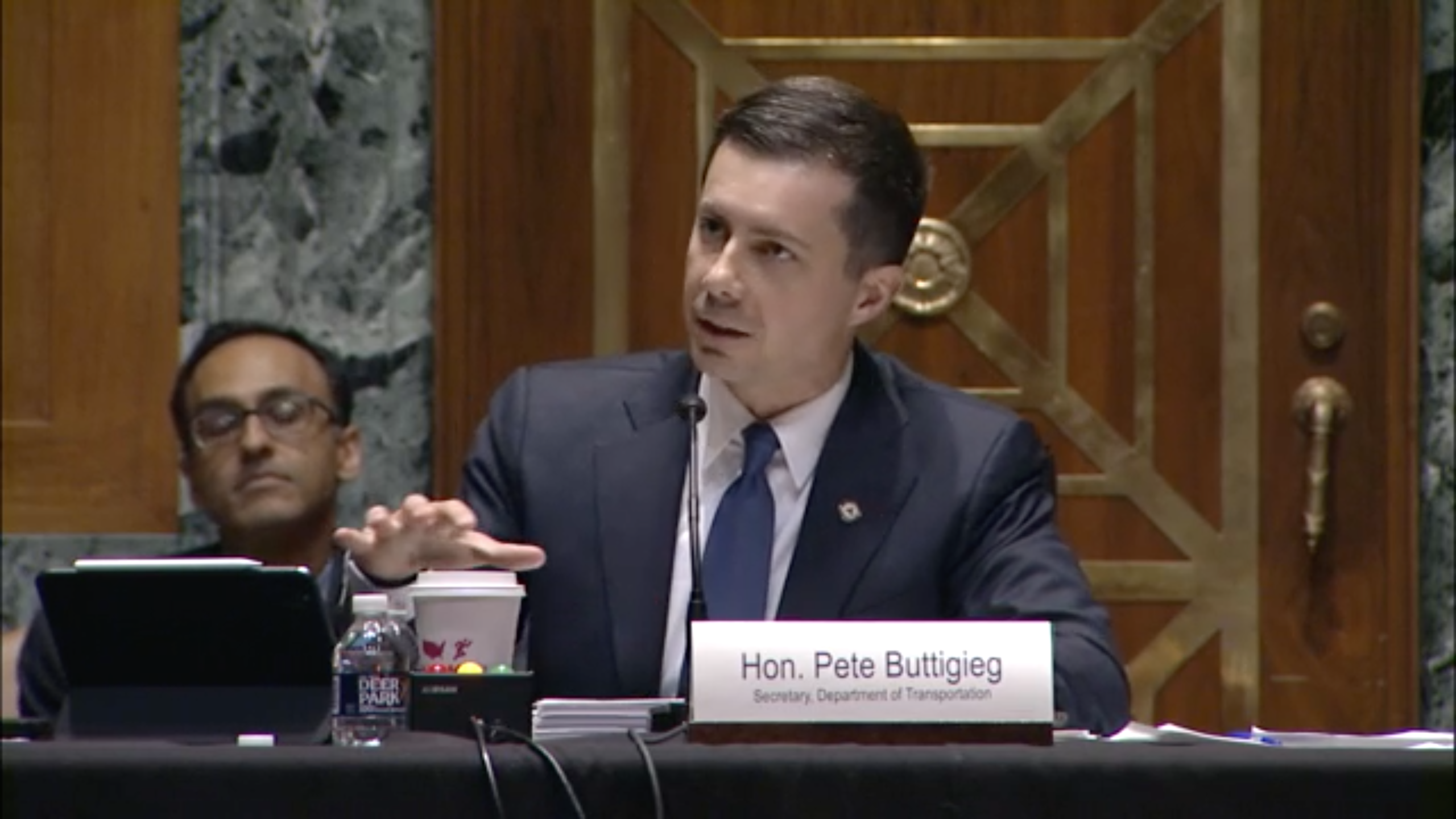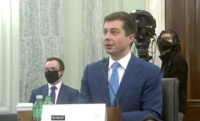The U.S. Dept. of Transportation's fund that reimburses states for repair costs of post-disaster highway and bridge damages faces a “mismatch,” says DOT Secretary Pete Buttigieg, with potential emergency aid requests far exceeding dollars available.
Testifying before a House appropriations subcommittee hearing on April 30, Buttigieg said the emergency relief, or ER, fund—which is overseen by the Federal Highway Administration—had a balance of $950 million.
But he also said that DOT officials were monitoring other past disasters whose highway-related damages amount to about $2 billion in “unmet need.”
Under the ER program, states apply to FHWA for reimbursements for costs of repairs and other activities related to various disasters.
Buttigieg also said that total excludes the projected costs of replacing the Francis Scott Key Bridge in Baltimore, which collapsed on March 26 after it was struck by a large containership. Just two days after the bridge collapsed, FHWA announced the release of $60 million to the Maryland Dept. of Transportation from the ER fund as a "down payment" to cover some of the initial costs of repairs.
Buttigieg cautioned that the $2-billion figure “does not necessarily mean that we would have $2 billion of requests ready to go, looking for reimbursement in a single year.”
He added that FHWA has had instances where, because of the time it takes to do reconstruction work, reimbursements from FHWA went to states as long as five years or more after the date of the incident.
'Not Enough in That Fund'
At the hearing of the transportation and housing subcommittee, Rep. Mike Quigley (Ill.), the panel's top Democrat, raised the issue of the ER fund's capacity, saying “I think we need to have an honest discussion here about the Emergency Relief fund ... because there’s not enough in that fund.”
Quigley added: “If we equate this, as we often do, with a household, it’s like operating without insurance, in a sense, and disasters do happen.”
Buttigieg responded, noting that DOT "would welcome support on ways to make sure that that fund is adequately topped up."
Quigley asked Buttigieg how large a supplemental funding request the ER program might need. Buttigieg did not provide a specific figure but said, “It would be optimal to know that the fund is being refreshed at a rate that keeps up with the needs that have come to it."
Tallying Recent Reimbursements
Outlining a possible funding ballpark, he noted that FHWA reimbursed $749 million to states in May 2023 and $729 million in January 2024. Buttigieg added, "You would want some kind of cushion" for the Francis Scott Key Bridge.
After the initial $60-million disbursement of funds from FHWA following the Maryland bridge collapse, Buttigieg said in a statement that DOT would provide "further resources as recovery and rebuilding efforts progress."
Besides ER funds, there are other types of federal transportation funding that the state could seek, including two competitively awarded bridge programs created in the 2021 Infrastructure Investment and Jobs Act (IIJA) and another program established in the fiscal year 2024 appropriations law. In addition Maryland could use some of its IIJA highway and bridge funds that are distributed by formulas.
Susan Howard, American Association of State Highway and Transportation Officials director of policy and government relations, said in an interview, "It's probably going to be some combination of different funding sources that go into the ultimate project."
Howard noted that the ER fund receives an annual authorization of $100 million and Congress has augmented that from time to time with additional funds through supplemental appropriation measures.
Howard said the IIJA included another beneficial ER-related provision.
She noted that the statute extended the time period in which states could receive 100% federal ER funding for disaster expenses for up to 270 days after a disaster declaration, compared with 180 days pre-IIJA.






Post a comment to this article
Report Abusive Comment